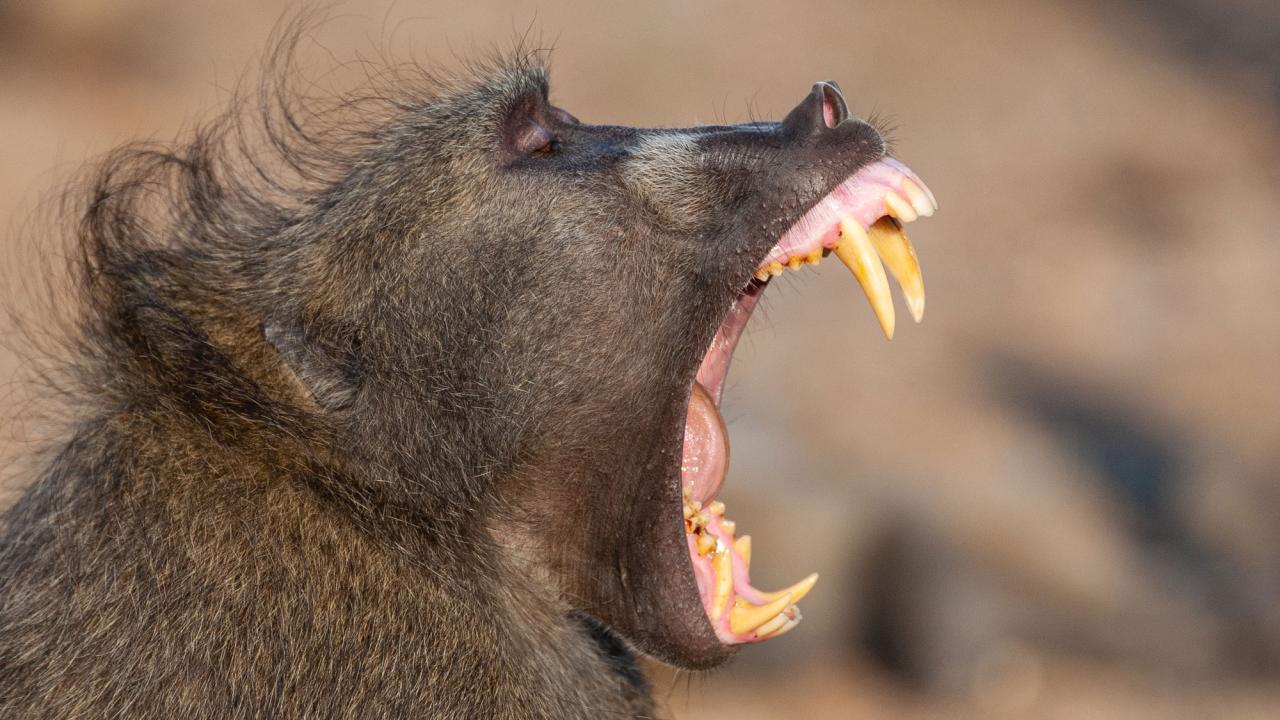The key to unlocking climates of the ancient past, including weather seasonality and rainfall, may lie in an unexpected place: primate teeth.
In a study recently published in Geochimica et Cosmochimica Acta, an international research team analyzed teeth from 14 different primates, including one human, to better understand the rainfall or water input patterns across their lifetimes. Cross-referencing the levels of an oxygen isotope related to different climates with environmental records, the team provides some of the first direct evidence that primate teeth are precise recordkeepers of how much water was available in past climates.
“From both a biological and archaeological perspective, teeth are the strongest part of the human body,” said Edgar Huerta, a co-author of the study and a Ph.D. candidate in the Department of Anthropology in the College of Letters and Science at UC Davis. “They preserve really well, but also teeth have a 24-hour formation process that starts before someone is born and lasts until you’re about 18 years old.”
“Because of that, they record what we eat and drink, so whatever you're drinking that day, if your teeth are still growing, it's going to be incorporated into that enamel,” he added.
Water clues locked in enamel
In the study, the team analyzed the innermost enamel layers of 17 molars from 14 individuals, including one human from Brisbane, Australia; three wild chimpanzees; and 10 captive macaques. Using a technique called secondary ion mass spectrometry (SIMS), they collected 1,217 individual measurements of stable oxygen isotopes, including one called oxygen-18.
Huerta explained that the presence of oxygen-18 in water varies depending on a host of environmental factors, including temperature, precipitation, altitude and evaporation cycles. Typically, its presence in surface water is higher during warm or dry weather, and lower during cool or wet periods.
“Oxygen-18 is in the water that we consume and that then gets incorporated into our teeth,” Huerta said. “So let’s say you were drinking water from a small creek during the summer and there was no rain, then the oxygen-18 in that creek is going to be higher. During the winter, it might rain more, so that oxygen-18 will lower.”
Using the SIMS technique to glean the oxygen-18 content of the studied teeth throughout their development, the team successfully uncovered information about water intake and weather seasonality for each studied individual. This information was then cross-referenced with historical records of weather and rainfall, or other life records.
“Our Australian tooth donor began her life during a wet summer during which a cyclone dumped enormous amounts of rain on Brisbane…and months of high rainfall in the region persisted through to autumn,” study lead author Tanya Smith, of Giffith University, wrote in The Conversation.
“Her tooth enamel formed during the summer of 1990 showed oxygen isotope trends that were consistent with the rainfall patterns at the time,” Smith continued. “The minimum values occurred close in time to the wettest period, and the maximum values happened towards the end of the long dry spell that began later in the year.”
For the captive macaques, the team found that oxygen-18 levels of their teeth even reflected periods when the primates were ill and experiencing dehydration. For the wild chimpanzees, the team tracked broad seasonal weather patterns based on the oxygen-18 content of their enamel.
New techniques, ancient questions
The team’s fine-scale approach differs from previous bulk methods, allowing them to discern water intake and seasonality at short timescales throughout the period of a tooth’s growth. This could not be accomplished with the bulk analysis methods used in the past.
"Previously, we'd cut a tooth into small sections using a saw. This would give us data points with an interval of about 3-6 months,” said Jelmer Eerkens, a professor of anthropology at UC Davis. “The SIMS technique uses a highly focused ion beam to remove tiny spots of the tooth for analysis, which gets us down to about a week of growth. Teeth actually have daily growth lines in them, so there is the possibility of getting even finer resolution in the future."
In the past, the SIMS technique was predominantly applied to geological analyses.
While the oldest individual analyzed in the study was born in 1990, the researchers are optimistic that the technique can be applied to teeth from ancient primates who lived from thousands to tens of millions of years ago.
If employed on ancient primate teeth, the technique could help researchers track the weather patterns and environmental conditions that led to the migration and proliferation of primate species across the globe.
“There are a lot of questions surrounding when modern humans left Africa and what conditions they were experiencing during that time,” Huerta said. “We would like to see this technique applied to those paleontological questions.”
Media Resources
Contact: Greg Watry, gdwatry@ucdavis.edu
